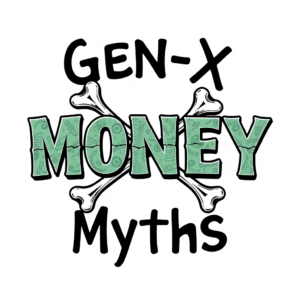Roth IRA vs. Traditional IRA: Which One Rocks Harder?

ROTH IRA vs. TRADITIONAL IRA:
Which One Rocks Harder?
Rocking Retirement: Roth IRA vs. Traditional IRA
What is the Screaming Difference?
Saving for retirement sounds boring, but it is actually one of the smartest things to do for your future. Two popular ways to save are through IRAs, which stands for Individual Retirement Accounts. The two main types are Roth IRA and Traditional IRA. They both help grow your money over time, but they work in different ways—especially when it comes to taxes.
I needed it explained in simple terms. This helped me understand which one is right for me. Following is what I got.
What Is an IRA?
An IRA is a special account that one uses to save money for retirement. You can put money into it every year. That money can grow by investing in things like stocks, bonds, or mutual funds. The government gives tax benefits for using an IRA, which means you can keep more of your money.
Roth IRA: Pay Taxes Now, Save Later
A Roth IRA is an account where you put in money that you’ve already paid taxes on. That means when you take the money out in retirement, you don’t have to pay taxes again.
Pros of a Roth IRA
- Tax-Free Withdrawals: You don not pay taxes when you take money out in retirement.
- No Required Withdrawals: You do not have to take money out at a certain age.
- Flexible Access: You can take out the money you put in (not the earnings) anytime without penalty.
- Great for Young People: If you expect to earn more later, paying taxes now might save you money in the long run.
Cons of a Roth IRA
- No Tax Break Now: You do not get a tax deduction when you put money in.
- Income Limits: If you make too much money, you will not be allowed to contribute.
- Contribution Limits: You can only put in a certain amount each year ($7,000 in 2025, or $8,000 if you are 50 or older).
Traditional IRA: Save Taxes Now, Pay Later
A Traditional IRA lets you put in money before paying taxes. That means you get a tax break now, but you’ll pay taxes when you take the money out in retirement.
Pros of a Traditional IRA
- Tax Deduction Now: You can lower your taxes this year by contributing.
- No Income Limits to Contribute: Anyone with earned income can contribute, no matter how much they make.
- Tax-Deferred Growth: Your money grows without being taxed until you withdraw it.
Cons of a Traditional IRA
- Taxes Later: You will pay taxes on the money when you take it out in retirement.
- Required Withdrawals: You must start taking money out at age 73, even if you don’t need it.
- Early Withdrawal Penalties: Penalty and tax if you take money out before age 59½, unless it is for a special reason.
Side-by-Side Comparison
| Feature | Roth IRA | Traditional IRA |
| Tax on Contributions | Paid upfront | Deferred until withdrawal |
| Tax on Withdrawals | None (if qualified) | Taxed as income |
| Income Limits | Yes | No |
| Required Withdrawals | No | Yes, starting at age 73 |
| Early Withdrawal Penalty | Only on earnings | On full amount |
| Best For | Younger savers, future tax hikes | Current tax savings, lower future income |
Which One Should You Choose?
Choosing between a Roth IRA and a Traditional IRA depends on your situation. Here are some things to think about:
Do you want a tax break now or later?
If you want to lower your taxes this year, a Traditional IRA will be better. If you want to pay taxes now and enjoy tax-free money later, go with a Roth IRA.
How old are you?
Younger people often choose Roth IRAs because they have more time for their money to grow tax-free.
What’s your income?
If you make a lot of money, you can not contribute to a Roth IRA. In that case, a Traditional IRA could be your only option.
Do you think taxes will go up in the future?
If you think tax rates will be higher when you retire, a Roth IRA can save you money.
Final Thoughts
Both Roth and Traditional IRAs are great tools to help you save for retirement. They each have their own benefits and drawbacks, but the most important thing is to start saving. The sooner you begin, the more time your money has to grow.
If you are still not sure which one to choose, talk to a financial advisor. You can also use an online calculator to see which fits your goals best. Either way, you are making a smart move by thinking about your future now.
*********************
For a selection of excellent retirement tools that I personally use and recommend, click HERE. Check this page regularly, as I update it often.
Ready to turn up the volume on your retirement?
Join the Retirement Rockstars crew and get exclusive tips, playlists, and financial tools that help you live loud now—and retire even louder.
Subscribe below and get our free “Retirement Starter Playlist” delivered straight to your inbox.
Until next time,
Peace,
Tia
As an Amazon Associate, I earn from qualifying purchases. These links help keep the lights on and the mixtapes rolling—thank you for supporting Retirement Rockstars.






